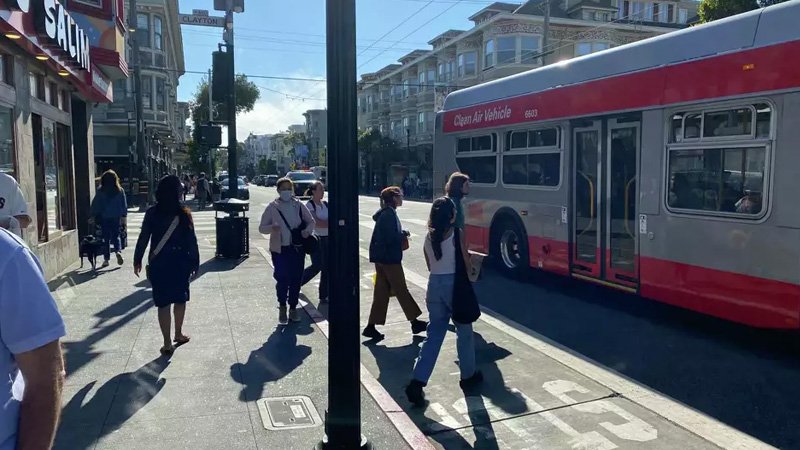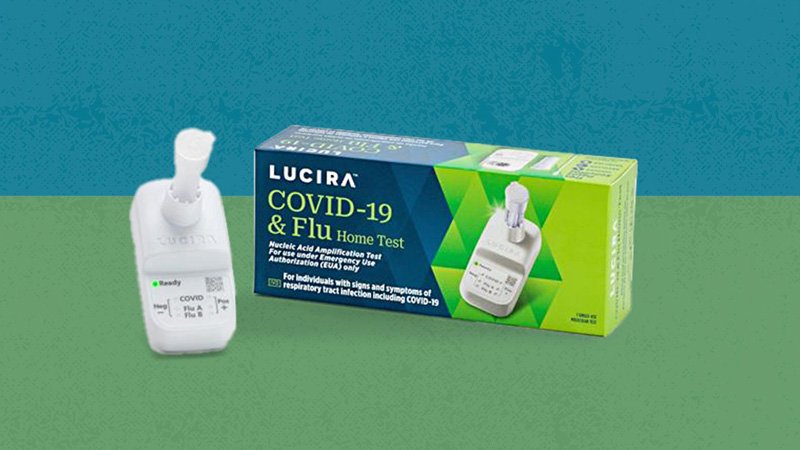COVID-19 emergency room visits and test positivity rates in California are rising sharply as the summer wave of the virus gains momentum. Some individuals report more severe symptoms compared to previous encounters. However, current figures remain significantly lower than in past years, and health officials recommend an updated fall vaccine to protect against the latest coronavirus variants during the anticipated winter surge.
Emergency room visits in California increased by nearly 20% last week compared to the previous week, and the test positivity rate climbed to 10.6% — the highest since January’s winter surge and more than double the 4.1% rate recorded a month earlier, According to SFchronicle.
According to the U.S. Centers for Disease Control and Prevention (CDC), California is among 39 states experiencing rising infections, with no states or territories reporting a decline.
“There’s a lot of COVID circulating right now,” said Dr. Peter Chin-Hong, an infectious disease expert at UCSF. “I don’t think it’s going to taper off anytime soon. I’m expecting those numbers to continue to be high for a few more weeks.”
The uptick is driven by summer activities and the FLiRT variants, which evolved from the omicron strain and surged in the spring. Variants KP.3, KP.2, KP.1.1, and newer offshoot LB.1 now account for approximately 65% of U.S. infections, according to the latest CDC data.
While there is no indication that the LB.1 variant poses a more serious disease risk than previous variants, the CDC notes it may infect some people more easily due to a single deletion in a spike protein.
Current COVID Symptoms and Increased Severity
Anecdotally, Dr. Chin-Hong mentioned that many individuals requiring medical attention at UCSF who were recently infected are experiencing more severe symptoms than during previous bouts with the virus.
“What’s happening is interesting,” he said. “Since most people weren’t vaccinated last year and the variants have changed significantly, it is taking longer for their antibodies to respond.”
Only 22.5% of U.S. adults have received the updated COVID-19 vaccine that became available last fall, a considerable decrease from the 69% fully vaccinated by August 2021. Many individuals have not received a recent vaccine, leading to potentially more severe illness.
“If people had kept up to date with their vaccines, the course of illness might have been milder now,” Chin-Hong added. “Many received their shots early in the pandemic but haven’t had one recently.”
Although it is too early to determine if the LB.1 variant provokes unique symptoms, the CDC lists basic COVID-19 symptoms that can appear two to 14 days after exposure, ranging from mild to severe. Common symptoms include fever or chills, cough, shortness of breath, fatigue, muscle or body aches, headache, loss of taste or smell, sore throat, congestion or runny nose, nausea or vomiting, and diarrhea.
Chin-Hong has observed a decrease in the early pandemic symptoms such as shortness of breath and loss of taste and smell. Instead, more people are experiencing gastrointestinal issues — symptoms they may not immediately associate with COVID-19.
The CDC advises seeking medical attention for severe symptoms such as trouble breathing, persistent chest pain, new confusion, inability to wake or stay awake, and pale, gray- or blue-colored skin, lips, or nail beds.
Despite the uptick in emergency department visits at UCSF, most people are discharged earlier, and fewer require intensive care.
Death Rates Remain Low Despite Rising Cases
Despite a slight increase in recent weeks, COVID-19 now accounts for only about 0.5% of deaths in California as of late June, according to the latest state health department data. This figure is markedly lower than the 3.5% recorded during the January winter surge and drastically below the 40% seen during the first winter surge in January 2021.
Before this summer’s increase, the percentage of deaths attributed to COVID-19 had stayed well below 1% since March.
Dr. Ashish Jha, former COVID-19 response coordinator for the White House, recently described the current situation as a “modest summer wave” likely to precede a more substantial winter uptick.
“For most people, COVID has now become more of an annoyance than a serious illness,” he wrote in a thread on the social media platform X. “But if you are older or immunocompromised, it can still be quite serious. That’s why a vaccine for those folks on at least an annual basis is critical, as are treatments if they get infected.”
National Wastewater Levels Reach High Category
Nationally, the CDC’s COVID Data Tracker shows a test positivity rate of 9%, an increase of 0.8 percentage points from the previous week. Emergency department visits rose by 18.2%, and hospitalizations by 13.3%.
COVID-19 wastewater levels have reached the high category, with an upward trend observed over the past 21 days. report from BBC.
“Some areas of the country are experiencing consistent increases in COVID-19 activity, including increases in COVID-19 test positivity and emergency department visits and increases in rates of COVID-19-associated hospitalizations among adults 65+ at several sites,” the CDC said in its weekly snapshot.
Most medical professionals emphasize that the virus is not as deadly as during the pandemic’s initial phase, thanks to vaccines and available treatments. Nationally, death rates dropped by 25% last week and by 0.6% in California.
However, the pandemic remains a significant health concern. In 2023, over 75,500 people died from COVID-19, and approximately 916,300 were hospitalized in the U.S.
Recommendations for Fall Vaccines
Following some debate, the Food and Drug Administration has advised vaccine manufacturers to reformulate their fall shots to target the KP.2 lineage, intending to blunt the impact of the next wave. Last month, the CDC recommended the updated vaccines for all Americans aged 6 months and older to be available alongside the annual flu jabs. The new shots are expected in August and September.
“Our top recommendation for protecting yourself and your loved ones from respiratory illness is to get vaccinated,” said Mandy Cohen, director of the CDC. “Make a plan now for you and your family to get both updated flu and COVID vaccines this fall, ahead of the respiratory virus season.”
Key Points About the Fall COVID-19 Vaccines:
- Who should receive the updated 2024-25 COVID-19 vaccine? The CDC recommends that everyone aged 6 months and older receive the updated 2024-25 COVID-19 vaccine to protect against potentially serious outcomes, regardless of previous vaccination history.
- When will the new vaccines be available? Updated COVID-19 vaccines from Moderna, Novavax, and Pfizer are expected to become available later this year, in August and September.
- Why is it important to get the updated COVID-19 vaccine? The virus causing COVID-19, SARS-CoV-2, continuously evolves. Over time, the vaccines developed to combat COVID decline in effectiveness, making it crucial to receive the updated 2024-25 vaccine to enhance protection against the latest virus variants responsible for most infections and hospitalizations. Additionally, vaccination reduces the risk of long COVID, which can cause prolonged symptoms following an acute infection.
- When is the ideal time to get the fall vaccine? Chin-Hong recommends getting the updated shot ahead of the anticipated winter surge, which typically peaks between December and January. “You don’t want to get it too early,” he said. Getting it sometime in October, right before Halloween, is advisable.
- Is it too late for high-risk individuals to get a COVID-19 booster this summer? No, it’s not too late. High-risk individuals should get a jab between the annual shots. Vulnerable individuals can get the current vaccine this summer and still be eligible for a new shot in the fall. Health experts recommend a four-month interval between jabs.
“If you did not get the vaccine approved in the fall of 2023, I would go ahead and get it now if you are older than 65 or immunocompromised,” Chin-Hong said.





